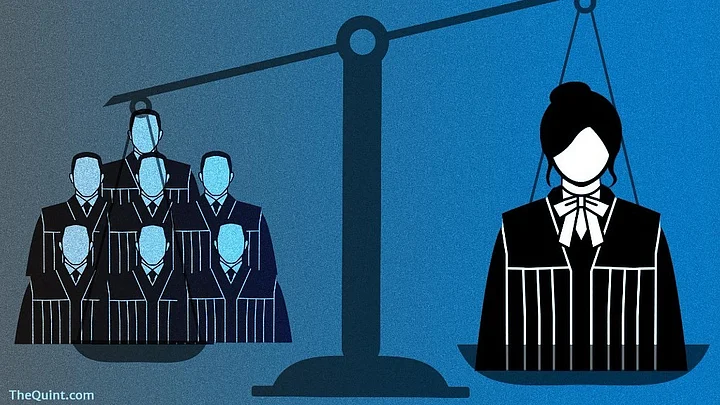Of the judges in the Supreme Court and various High Courts, only 12 percent are women as per statistics released by the Government of India. Missing gender diversity in the judiciary aggravates the implicit bias that exists in the courts.
In 1989, Justice M Fatima Beevi was the first woman to be appointed as a judge in the Supreme Court of India. She was appointed 39 years after the Supreme Court was instituted. Since then, only five more women have been appointed as judges in the Supreme Court.
Women as Supreme Court Judges
Six years after Justice Fatima Beevi, Justice Sujata V Manohar was appointed to the Supreme Court in 1994. Justice Sujata was previously the first woman Chief Justice of the Bombay High Court. She was on the 3-member bench that was instrumental in passing the landmark judgement in Vishaka & others vs the State of Rajasthan & others in 1997.
The bench didn’t just deliver a judgment that sexual harassment in the workplace was a violation of women’s human rights, but it also formulated comprehensive guidelines for sexual harassment at workplace, a first for India. These guidelines were to be considered law till appropriate legislation was created. The Vishaka guidelines paved way for the Sexual Harassment of Women at Workplace Act, 2013.
Today, for 24 male judges in the Supreme Court, there is just 1 female judge, Justice R Banumathi. She was the former Chief Justice of the Jharkhand High Court. Her most notable judgment includes being on the judicial bench that confirmed death sentence for the accused in the 2012 “Nirbhaya” gang rape case, even after the accused men appealed to re-consider their death sentences.
Justice Banumathi questioned that if this case was not the rarest of rare to award death penalty, then which case can fall under it. She asserted that convict’s background, age, no criminal record and good behaviour in prison cannot outweigh aggravating circumstances.
Is The Situation In High Courts Any Different?
A very few states in India have a comparable representation of women in the judiciary.
Sikkim is the state with the highest percentage of women judges at 33 percent, followed by Delhi High Court at 27 percent, Madras High Court at 18 percent, and Karnataka High Court at 16 percent and Bombay at 15 percent.
Uttarakhand, Tripura, Meghalaya, Manipur, Jharkhand, Chhattisgarh, Jammu & Kashmir and Himachal Pradesh High Courts do not have any female judges.
Missing Gender Diversity in Judiciary
Not only does the judiciary lack diversity in perspectives, inadequate representation of women judges directly aggravates the implicit bias that exists in the courts.
Both Justice Sujata and Justice Banumathi’s opinions and judgments indicate that having a woman in the decision making process of the courts allows and paves way to newer and more critical and contextual lens to gender related issues, especially crimes involving violence against women.
(This story was originally published on Factly and has been republished with permission.)
(Hey there, lady! What makes you laugh? Do you laugh at sexism, patriarchy, and misogyny? Do 'sanskaari' stereotypes crack you up? This Women's Day, join The Quint's Ab Laugh Naari campaign. Pick up that beer, say cheers, and send us photographs or videos of you laughing out loud at buriladki@thequint.com.)
(At The Quint, we question everything. Play an active role in shaping our journalism by becoming a member today.)
